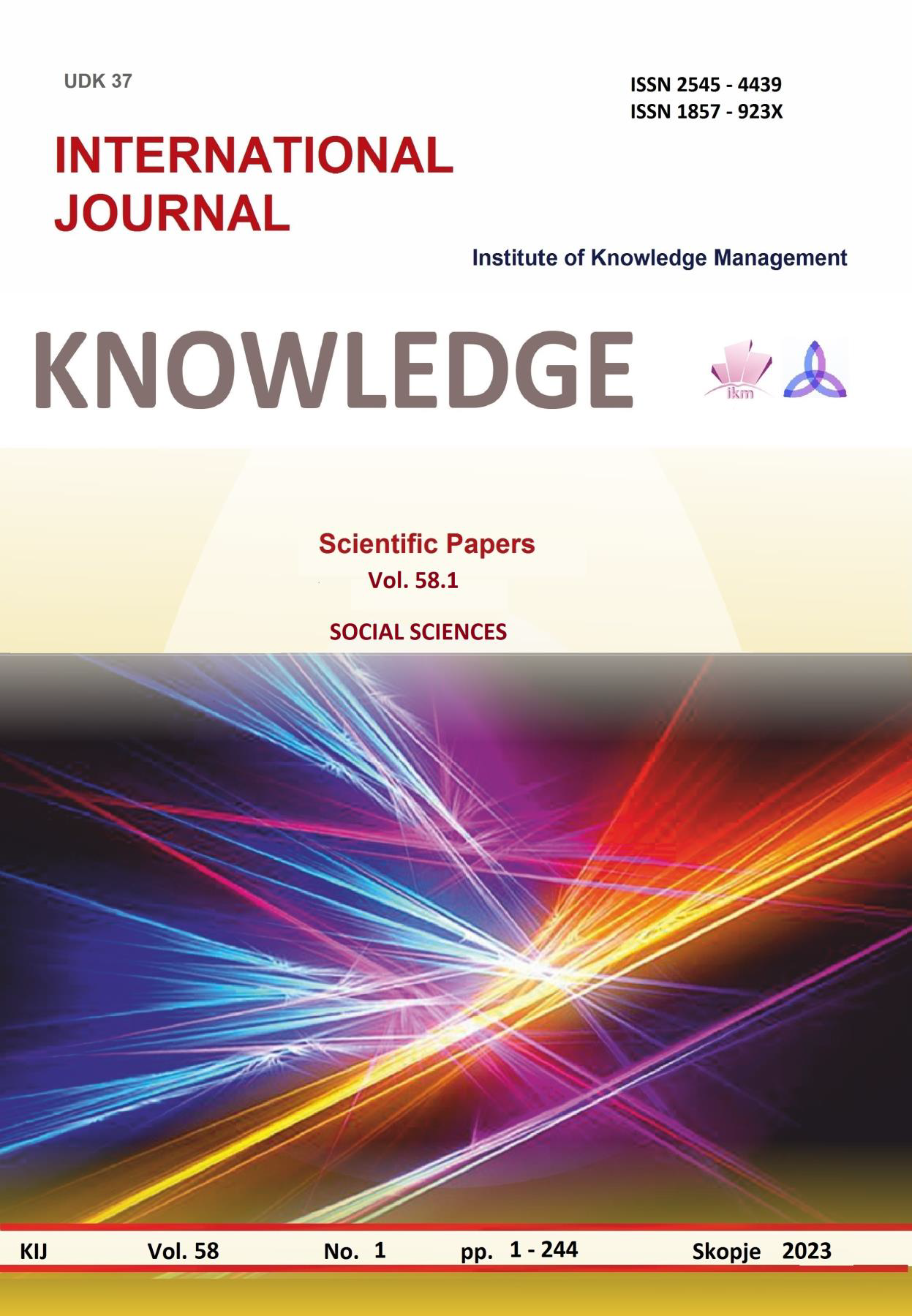CLUSTER POLICY AND ITS IMPACT ON FDI ATTRACTION MODELS AND BETTER COOPERATION BETWEEN MNEs AND SMEs
DOI:
https://doi.org/10.35120/kij5801123lKeywords:
FDI – Foreign Direct Investment, MNE – Multinational enterprise, SME – Small and medium enterprises, Cluster, CooperationAbstract
The concept of FDI has been analyzed by several theorists and many of them see FDI as an engine of growth. FDI affects economic growth directly and indirectly. It is well known that FDI has a positive impact on the domestic economy through the transfer of technology and skills, development of local suppliers in terms of providing technical assistance, training for employees, transfer of knowledge, etc. In this way, FDI affects the improvement of productivity and competitiveness of the entire economy. Multinational enterprises and their foreign affiliates recently generate one third of the global GDP, as well as two thirds of international trade. They also account for half of global exports. Precisely because of their economic importance, many governments offer subsidies and tax breaks to attract multinational enterprises, and consequently FDI. According to OECD (2005), linking MNEs and SMEs is important in the context of investment for development. The so-called "spillover" of know-how and technology from foreign investors to the local business sector is one of the biggest benefits of FDI for development. In most countries, SMEs are considered as the majority of the domestic business sector, therefore the process of overcoming the barriers to the connection between large and small enterprises is of great importance for the overall development. But the benefits of cooperation between MNEs and SMEs do not come automatically. Consequently, if we analyze specifically only one segment of the effects of FDI, such as the introduction of new technologies and innovations, as one of the biggest benefits of the host country from FDI, we come to the conclusion that this transfer is not always the same, but is very more present and effective if it is done in geographically concentrated clusters, in contrast to the cases when it is realized in dispersed companies of the same sector. Companies operating in clusters are characterized by a high degree of specialization and complementarity. This generates dynamic processes of learning, innovation and knowledge transfer. In the clusters, a process of collective learning is realized, which results in innovation and competitiveness even in sectors where high technology is not applied. This paper aims to explore models and ways of attracting FDI as well as creating preconditions for realizing as many benefits and spillovers as possible from the established cooperation between foreign MNEs and local SMEs, such as clusters. The results show that although the clusters in the Republic of North Macedonia are formally functioning, they are far from the desired condition to be in a situation to provide essential assistance in the direction of increasing the positive effects of the cooperation of SMEs and MNEs. However, the clusters should continue to be supported by the relevant competent institutions in order for the desired effects to be measurable, concrete and significant for the local economy.
References
Becattini, G., Bellandi, M., Dei Ottati, G., & Sforzi, F. (2003). From industrial districts to local development: An itinerary of research. In From Industrial Districts to Local Development. Edward Elgar Publishing.
Begum, M., Salahuddin, M., Chowdhury, M., & Wahid, A. N. (2018). Foreign direct investment-growth nexus revisited: New evidence from Bangladesh. International Journal of Economics and Financial Issues, 8(3), 168-174.
Blalock, G., & Gertler, P. J. (2009). How firm capabilities affect who benefits from foreign technology. Journal of Development Economics, 90(2), 192-199.
Blomström, M., Kokko, A., & Mucchielli, J. L. (2003). The economics of foreign direct investment incentives (pp. 37-60). Springer Berlin Heidelberg.
Boons, F., & Roome, N. (2005). Sustainable enterprise in clusters of innovation: new directions in corporate sustainability research and practice. Corporate environmental strategy and competitive advantage, 259-285.
Cadestin, C., De Backer, K., Desnoyers-James, I., Miroudot, S., Rigo, D., & Ye, M. (2018). Multinational enterprises and global value chains: the OECD analytical AMNE database.
Caesar, A. E., Chen, H., Udimal, T. B., & Osei, A. (2018). Foreign direct investment, growth of output indicators and economic growth in China: empirical evidence on causal links. International Journal of Economics and Financial Issues, 8(3), 315.
De Mello, L. R. (1999). Foreign direct investment-led growth: evidence from time series and panel data. Oxford economic papers, 51(1), 133-151.
De Propris, L., & Driffield, N. (2006). The importance of clusters for spillovers from foreign direct investment and technology sourcing. Cambridge Journal of Economics, 30(2), 277-291.
Feldman, M. P. (2001). The entrepreneurial event revisited: firm formation in a regional context. Industrial and corporate change, 10(4), 861-891.
Guerrieri, P., Iammarino, S., & Pietrobelli, C. (2001). The global challenge to industrial districts. Edward Elgar Publishing.
Javorcik, B. S. (2004). Does foreign direct investment increase the productivity of domestic firms? In search of spillovers through backward linkages. American economic review, 94(3), 605-627.
Jordaan, J., Douw, W., & Qiang, C. Z. (2020). Foreign Direct Investment, Backward Linkages, and Productivity Spillovers.
Karlsson, C., Johansson, B., & Stough, R. R. (Eds.). (2014). Agglomeration, clusters and entrepreneurship: studies in regional economic development. Edward Elgar Publishing.
Melane-Lavado, A., Álvarez-Herranz, A., & González-González, I. (2018). Foreign direct investment as a way to guide the innovative process towards sustainability. Journal of cleaner production, 172, 3578-3590.
Organisation for Economic Cooperation and Development. (2005). Efforts and Policies of the Members of the Development Assistance Commitee. Paris, OECD.
Organisation for Economic Cooperation and Development. (2009). OECD Annual Report 2009. Paris, OECD.
Pjanić, M. R., & Mitrašević, M. M. (2021). Foreign Direct Investments in Serbia. Kultura Polisa, 18(44), 253-265.
Porter, M. E. (1998). Clusters and the new economics of competition (Vol. 76, No. 6, pp. 77-90). Boston: Harvard Business Review.
Porter, M. E. (2000). Location, competition, and economic development: Local clusters in a global economy. Economic development quarterly, 14(1), 15-34.
Porter, M. E. (2001). Regions and the new economics of competition. Global city regions, 139-152.
UNCTAD. (2019). Special Economic Zones. World investment report 2019





